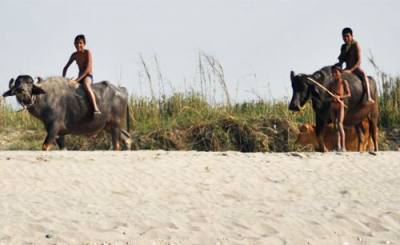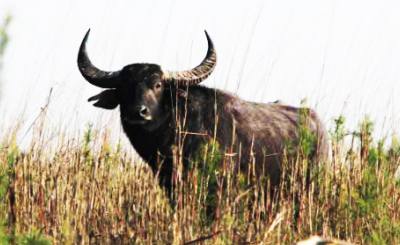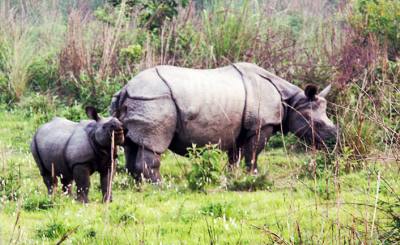Bardia National Park is the largest park in the lowland( Terai ) of Nepal, covering an area of 968 sq km. The park was established to protect the ecosystems and conserve tiger and its prey species. What makes a visit to Nepal's Bardia National Park particularly special is not just the large and intact habitat area or the isolated location, but the presence of one of the last known herds of wild elephants in South Asia.
Wildlife at Bardia National Park
Bardia also boasts of the greatest number of deer species in Nepal. The six deer species found in the park are: Chital or Spotted Deer, with its ubiquitous white spots on a brown coat; Hog Deer, similar to but smaller than Chital; Sambhar, the largest Deer on Indian subcontinent with a shaggy coat and thick antlers; Swamp Deer; Barasingha; and reddish-colored Barking Deer, the park’s smallest Deer.
Other large mammals are: gaur, the largest wild oxen in the world; wild boar, an omnivorous black-coated creature with large tusks; the agile sloth bear, a shaggy black bear with a distinctive white V on its chest; blue bull or nilgai, the largest Antelope on the Indian subcontinent; and Himalayan tahr. Serow and goral, two goat-antelope members, are also found in the Bardia Natinla Park.
Small mammals include langur monkey, rhesus macaque, and jackal, three species of cats (jungle, leopard, and fishing); yellow-throated marten; mongoose; and Indian otter. Two species of crocodiles swim in the Karnali, Girwa, and Babai Rivers - the blunt-snouted marsh mugger and the fish-eating gharial with its long thin snout. These creatures share the water with the freshwater Gangetic dolphin. The Karnali also supports the great mahseer, which weighs up to 90 lbs, an anglers prize catch.
Birds are the parks most conspicuous fauna with over 300 resident and migratory species. Avid bird-watchers can visit the park in November or from February to April when migrants arrive, depart or pass through.






